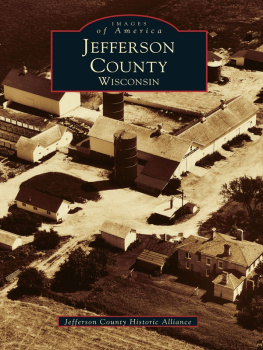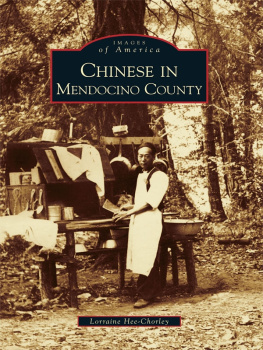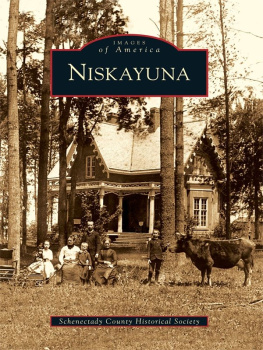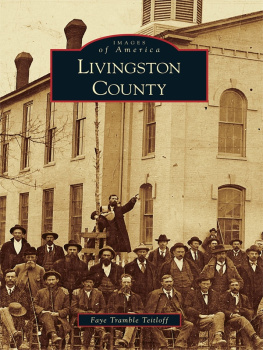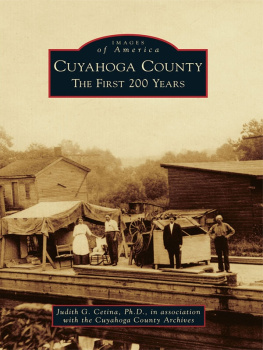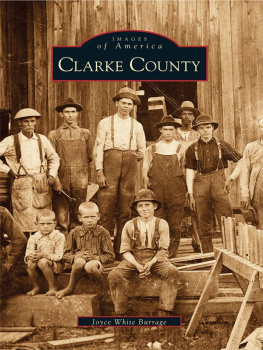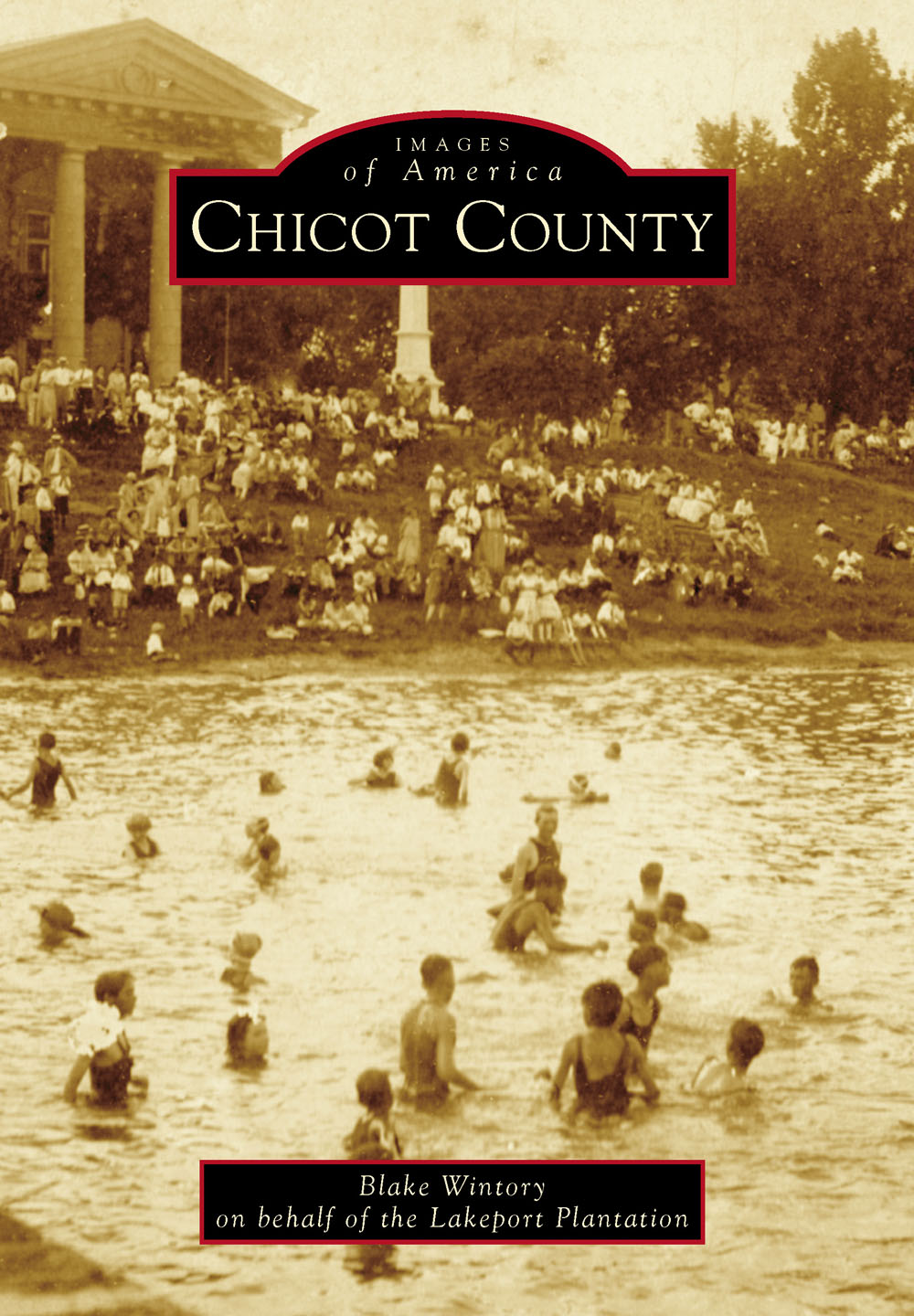
IMAGES
of America
CHICOT COUNTY
ON THE COVER: The Lake Village Water Carnival was first held on July 4, 1920. Celebrating Independence Day and the towns place on Lake Chicot, the event incorporated swimming and diving competitions, a parade, baseball, dancing, and, by 1921, boat races. Fireworks were added in 1923. Sponsored by the W.T. Conkley Post of the American Legion, the carnival attracted visitors from across the regionan estimated 8,000 to 10,000 in 1926. The event ended following the flood of 1927 and the Great Depression, only to be revived in 1947. (Courtesy of the Museum of Chicot County, Arkansas.)
IMAGES
of America
CHICOT COUNTY
Blake Wintory
on behalf of the Lakeport Plantation

Copyright 2015 by Blake Wintory on behalf of the Lakeport Plantation
ISBN 978-1-4671-1405-9
Ebook ISBN 9781439653005
Published by Arcadia Publishing
Charleston, South Carolina
Library of Congress Control Number: 2015937929
For all general information, please contact Arcadia Publishing:
Telephone 843-853-2070
Fax 843-853-0044
E-mail
For customer service and orders:
Toll-Free 1-888-313-2665
Visit us on the Internet at www.arcadiapublishing.com
To Marvin Buffington, William Sessions, Clara Henry, Elbert Cashion Sr., John C. Hammock, George Kelley, Sheila Brannon, Libby Borgognoni, and all other Chicot County historians.
CONTENTS
ACKNOWLEDGMENTS
The photographs in this book are only a slice of Chicot Countys history. I know that many stories are not told, and some people, places, and groups are underrepresented. However, the stories and images here, I believe, do offer a glimpse of Chicot Countys places, times, and peopleits history. Everyone has a story, a family, and history. Write it down, share it, and preserve it. It makes my job easier, but your kids and grandkids will appreciate it even more.
The selected bibliography includes many of the valuable sources on Chicot Countys history that were used to write this book. I made efforts to correct past errors and verify facts. I regret any errors that I might have made.
Everyone who shared an image used in the book is credited, but I would like to offer special thanks to those who went out of their way to share their knowledge and find photographs for this projectLibby Borgognoni, Cathy Cannatella, Annie Paden, LaRhonda Mangrum, Jimmy Parkerson, and the Arkansas Historic Preservation Program.
INTRODUCTION
Created in the Arkansas Territory in 1823, Chicot County is situated along the Mississippi River in Southeast Arkansas. In the 16th and 17th centuries, Europeans explored the region, meeting, trading, and sometimes fighting with Native Americans like the Quapaw and Tunica. Spanish explorer Hernando de Soto died at the village of Guachoya on May 31, 1542, in what is likely now Chicot County. Frenchman Ren-Robert Cavelier Sieur de La Salle claimed the region for France in 1682. Under La Salles authority, Henri de Tonti established Arkansas Post at the mouth of the Arkansas River in 1686. With the area now part of New France, French fur traders descended the Mississippi River. When they encountered snags and tree stumps in the waterway that could damage boats or skiffs, they called them chicotsFrench for teeth or stumps. Chicot County derived its name from a particularly dangerous passage along the route down the Mississippi. Georges-Henri-Victor Collot, a French government official writing during a 1796 expedition, described the Island aux Chicots as one of two passages encumbered with drift-wood, heaped up sixty feet high that impeded navigation. In the early 19th century, Point Chicot became the countys earliest point of trade. John James Audubon stopped there in 1820 and commented in his journal, Point Chico is a handsome spot on this river that never overflowsand answers well for the Growth of Cotton Corn etc.
Upon Arkansas statehood in 1836, Chicot Countys population reached only 2,471 (white and enslaved), but wealthy planters attracted to the countys rich frontier lands were already investing in cotton plantations along the Mississippi River. The tale of the Arkansas Traveler, told (possibly as early as 1840) by Chicot County planter Sanford C. Faulkner, illustrated the tensions between the rural poor who squatted on the frontier and the elite planters. Cotton agriculture and slavery soon dominated the countys economy. In 1860, Chicot County produced more cotton (40,948 bales) than any county in the state. Chicot County also had the distinction of having the highest percentage of slaves in the state, 81 percent of the countys total population of 9,234.
Chicot Countys support for secession beamed bright after the election of Pres. Abraham Lincoln and the formation of the Confederate States of America in the fall and winter of 1860. In January 1861, candidates vying to represent the county in Arkansass secession convention unanimously favored a Southern Confederacy of Slave States. However, the Civil War almost immediately disrupted planters control of enslaved labor and cotton production. After Federal gunboats appeared on the Mississippi River in June 1862, Confederates began burning cotton and sending some slaves away from the river, as far away as Texas. During 1863, Union troops frequently raided resource-rich plantations to supply the ongoing siege at Vicksburg, and, in the process, freed slaves. Confederate resistance continued, especially in the Greenville Bends, where slow moving Union gunboats and transports could easily be attacked. After Confederates successfully disrupted traffic in the river, Union action was forced at the Battle at Ditch Bayou on June 6, 1864. The battle, the last major battle in Arkansas, removed the Confederate threat along the river in Chicot County.
In 1865, at wars end, Chicot County was not the wealthy garden spot it was before the conflict. Cotton production by 1870 was only a quarter of production in 1860. Thousands of slaves were now free, but many former Confederates (planters and their families) maintained control of the countys plantations. Many freedmen and their descendants, until mechanization, became tied to the land and cotton through the cycles of sharecropping and debt.
The town of Dermott, located in the northwest corner of Chicot County, emerged on the trade route between Gaines Landing on the Mississippi River and the western interior of the state. In 1851, the route claimed the first railroad charter in Arkansas. By 1861, the incomplete Mississippi, Ouachita, and Red River Railroad extended seven miles inland from Eunice on the Mississippi River. Destroyed by Union troops in 1863, it was rebuilt and reached the town by 1872. The post office, initially known as Bartholomew in 1838, was renamed Bend by 1875 and renamed again in 1877 to honor longtime resident Charles McDermott (18081884). Another earlier settler, John J. Bowie (17851859), the brother of the famous Jim Bowie, also settled nearby, giving townships in Chicot and Desha Counties their names.
By 1887, two railroads crossed through Dermott, bringing industry and people. Incorporated in 1890, the town boasted a population of 500, two steam grist mills and cotton gins, four churches, and a school. By 1912, the prosperous town neared 2,000 residents and businesses on Iowa Street flourished. Dermotts new industries focused on hardwoods. Firms like Bimel-Ashcroff Manufacturing produced spokes, handles, and staves. As a regional center of industry and agriculture, the town remained the largest in the county throughout the 20th century.
Next page

